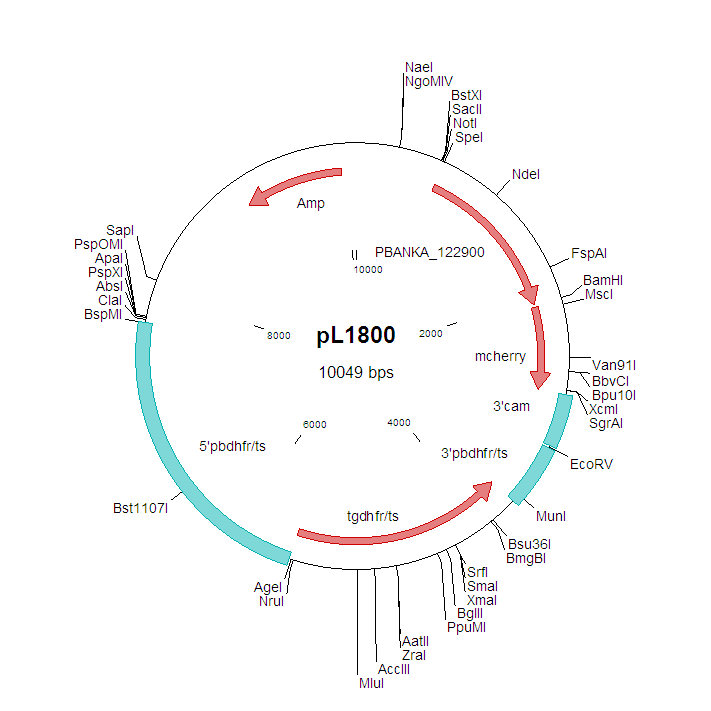| Additional remarks phenotype | Mutant/mutation
The mutant parasite expresses an C-terminal mCherry-tagged version of PBANKA_1229000 (PHIST)
Protein (function)
In the P. berghei genome sequence 3 phist genes (namely, PBANKA_1145400, PBANKA_1229000 and PBANKA_0700800) were identified via BLAST analysis using PHIST domains and pssm profiles as queries. This result differs from the single P. berghei phist gene described in the original annotation. Orthologs of PBANKA_1145400 and PBANKA_122900 were identified in the genome nucleotide sequence databases for other rodent malaria parasites; namely, P. yoelii (PY00289 and PY01786, respectively) and P. chabaudi (PCAS_114490 and PCAS_1229700, respectively). Additional phist genes were not identified in rodent malaria parasites. BLAST analyses using the PHIST domain as queries, identify as reciprocal best hits PBANKA_1229000, the P. vivax PHIST protein PvPHIST/CVC-8195 (PVX_093680), and P. falciparum PF3D7_0801000. This indicates possible orthologous (vertically inherited) relationships and is supported by the observed synteny of adjacent genes, including the ookinete-expressed gene warp, together composing a locus which is conserved across the Plasmodium genus. PBANKA_1229000 is internally localized in the P. berghei genome, but the locus appears to be sub-telomeric in species other than rodent malaria parasites.
The P. berghei PHIST proteins PBANKA_1145400 and PBANKA_1229000 possess similar features to P. falciparum PHIST proteins; namely, signal peptides and PEXEL/HT trafficking motifs; and single PHIST domains, which are divergent in aa sequence with respect to each other. Within the single predicted ORF of PBANKA_0700800 we were unable to identify a signal peptide sequence, and there were no attractive upstream ORFs suggestive of an erroneous gene model. We thus propose that PBANKA_0700800 is a pseudogene. The remaining P. berghei phist genes possess the typical 2-exon gene structure, in which the signal peptide is encoded on the first exon and the PEXEL/HT motif is located within the second exon.
Phenotype
Phenotype analyses of the blood stages of a mutant expressing an mCherry-tagged version of this protein by fluorescence microscopy did not reveal any fluorescence. However, IFA analysis using antibodies against mCherry and against the protein showed export into the host erythrocyte with a punctate localisation pattern (Moreira C. et al., 2016; Plos One 11(3):e0152510).
Additional information
The mutant parasite expresses an mCherry-tagged protein. The protein has been selected for tagging in a screen for putative exported proteins of P. berghei.
The genotype of the parasites has not been analyzed in detail.
Southern analysis of PFG-separated chromosomes (to show integration into the chromosome on which the target gene is located) has been performed (see below). This analysis provided evidence for tagging of the correct gene. The construct used aims at integration of the tagging construct by single-cross-over integration resulting in the presence of a tagged copy of the endogenous gene.

Other mutants
RMgm-718: mutant lacking expression of PBANKA_1229000 |
 *RMgm-708
*RMgm-708 Tagged: Mutant parasite with a tagged gene
Tagged: Mutant parasite with a tagged gene




